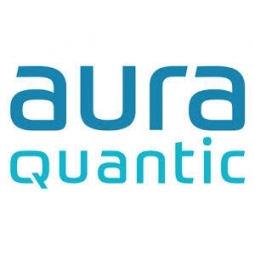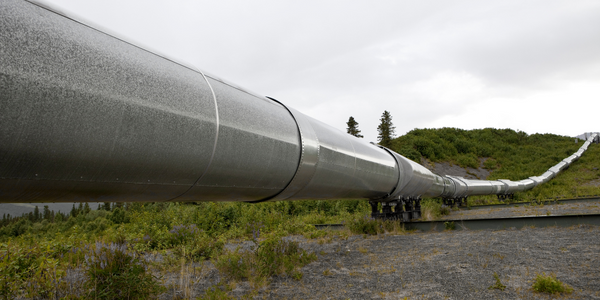Technology Category
- Application Infrastructure & Middleware - Data Exchange & Integration
- Application Infrastructure & Middleware - Middleware, SDKs & Libraries
Applicable Industries
- Electronics
- Oil & Gas
Applicable Functions
- Maintenance
- Product Research & Development
Use Cases
- Inventory Management
- Real-Time Location System (RTLS)
Services
- System Integration
About The Customer
PEMEX (Petróleos Mexicanos) is the largest company in Latin America and ranks 31st among the largest companies worldwide. With 150,000 employees, PEMEX is a major player in the oil and energy sector. The company holds third place globally in terms of crude oil production, first place in offshore hydrocarbon production, ninth place in oil reserves, and twelfth in revenues. This case study focuses on the implementation of the AuraQuantic iBPMS solution in the PEMEX Exploration and Production Division, a key division within the company.
The Challenge
PEMEX, the largest company in Latin America and a global leader in crude oil production, faced significant challenges in managing its operations. Despite its size and influence, most of its operations and processes were carried out manually, not automatically. This was largely due to the use of a system called SEAPSA, which had been in place for over a decade. The company recognized that this manual approach was not the most efficient way to manage the organization. Key business processes such as Job Applications, Technology Change Administration, Minor Change Administration, Design Process Automation, and Monitoring and Control of Vehicle Maintenance and Mechanical Integrity were all carried out manually. This led to issues such as task duplication, reliance on paper documentation and Excel spreadsheets, and high complexity in several processes. The company also faced challenges in integrating with external systems.
The Solution
PEMEX decided to automate its business processes and carried out an evaluation of several BPM Suites. The company prioritized parameters such as short implementation times, automatic document and library integration, and easy integration with other applications using Web Services and Adapter Server. PEMEX chose the AuraQuantic iBPMS solution due to its rapid implementation and deployment, licensing scheme adapted to their needs, quick response to maintenance requests, fast Return on Investment, auditing support, automatic integration of electronic document libraries, decision-making support, business status availability in real-time, agile integration with other applications, support when updating electronic models, and help to maintain operational discipline. The AuraQuantic solution included many predefined business processes, and new models could be created without the need for IT programming. This significantly reduced implementation times. For example, the “Design Process Automation” process, which is highly complex and includes the participation of 150 users, was implemented in just 3 months.
Operational Impact
Quantitative Benefit

Case Study missing?
Start adding your own!
Register with your work email and create a new case study profile for your business.
Related Case Studies.

Case Study
Taking Oil and Gas Exploration to the Next Level
DownUnder GeoSolutions (DUG) wanted to increase computing performance by 5 to 10 times to improve seismic processing. The solution must build on current architecture software investments without sacrificing existing software and scale computing without scaling IT infrastructure costs.

Case Study
Remote Temperature Monitoring of Perishable Goods Saves Money
RMONI was facing temperature monitoring challenges in a cold chain business. A cold chain must be established and maintained to ensure goods have been properly refrigerated during every step of the process, making temperature monitoring a critical business function. Manual registration practice can be very costly, labor intensive and prone to mistakes.

Case Study
Remote Wellhead Monitoring
Each wellhead was equipped with various sensors and meters that needed to be monitored and controlled from a central HMI, often miles away from the assets in the field. Redundant solar and wind generators were installed at each wellhead to support the electrical needs of the pumpstations, temperature meters, cameras, and cellular modules. In addition to asset management and remote control capabilities, data logging for remote surveillance and alarm notifications was a key demand from the customer. Terra Ferma’s solution needed to be power efficient, reliable, and capable of supporting high-bandwidth data-feeds. They needed a multi-link cellular connection to a central server that sustained reliable and redundant monitoring and control of flow meters, temperature sensors, power supply, and event-logging; including video and image files. This open-standard network needed to interface with the existing SCADA and proprietary network management software.

Case Study
Refinery Saves Over $700,000 with Smart Wireless
One of the largest petroleum refineries in the world is equipped to refine various types of crude oil and manufacture various grades of fuel from motor gasoline to Aviation Turbine Fuel. Due to wear and tear, eight hydrogen valves in each refinery were leaking, and each cost $1800 per ton of hydrogen vented. The plant also had leakage on nearly 30 flare control hydrocarbon valves. The refinery wanted a continuous, online monitoring system that could catch leaks early, minimize hydrogen and hydrocarbon production losses, and improve safety for maintenance.









